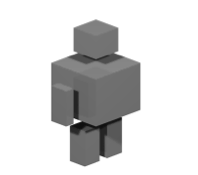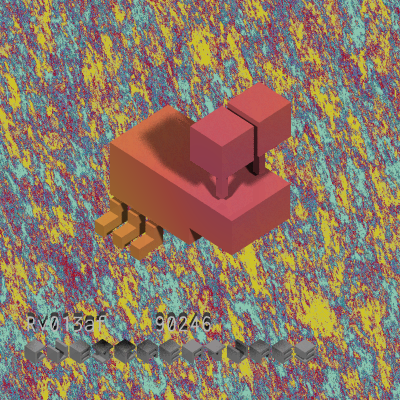
home |
about |
cubicreatures bestiary |
blog |
store |
contact
The origin of Cubicreatures was my work on a game using the Coldstone gaming engine, named "Boxboy vs. the Photoids". I was using POVray to create animation loops, and multi-angle images for an isometric style game. It became clear that Coldstone was never going to be updated, and other projects took over my time.

In 2008 the images developed for Boxboy came back to mind. At the time I was working my way out of a Kingdom of Loathing addiction, and the idea of adapting this to a web based game became a new goal. After the surprise that the domain name was not taken, I decided upon the "Cubicreatures" name. A persistent browser based game was prototyped using LAMP, with new graphics developed in POVray. It was a learning experience. By the time I got to a working multiuser game framework, I wanted to do a complete refactoring of the code I had written at the beginning of the project. Discouraged, other projects took over again.

Coming into 2011, the addiction was Minecraft (I cannot claim this addiction has abated). I once again turned to using povray (instead of Blender or something else that would be a more useful skill). The generative nature of Minecraft worlds inspired me to try to create generative cubicreature software in povray. I have been sporadicaly been working on that half of the cubicreatures project since that time, and recent output can be found in the blog.

When developing the Cubicreatures web game, I often considered making toys of the players and creature models as a form of merchandising for the game. With my increase in familliarity with woodworking (and accumulation of tools) I made the first 5 prototypes (viewable in the beastiary) in late 2011. At the end of 2012 I found myself making another batch of cubicreatures, with more on the way.
Each cubicreature is made mostly with hand tools from poplar, tilia, and reclaimed wood, then finished and painted with acrylic paint. They come with the pictured base/stand, and have (usually 1/4 inch) holes in the bottom of their feet for display purposes. They are moderately sturdy and built to last, however intended primarily for display.
